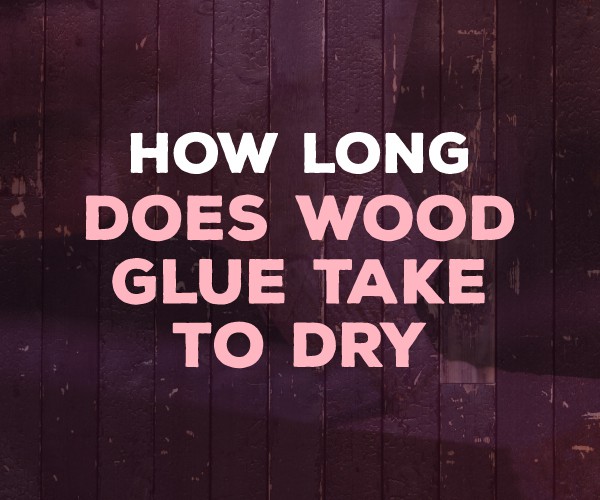Table of contents
Have you ever wondered how long does wood glue take to dry? This question is a serious concern for every woodworker, and if you’re focused on creating beautiful projects that will stand the test of time, it’s a concern you’ll need to know how to address.
Today, we’ll answer the question of how long does wood glue take to dry, and cover some of the factors that affect glues drying ability. That way, you’ll be able to get the most out of your next project.
The Short Answer
The rule of thumb suggests that you should give all glue-ups 24 hours to properly dry. This is overkill in almost any case, but if you’d rather be safe than sorry, air on the side of caution and give your piece a full day to dry before removing the clamps.
A Longer Answer
For almost any project, waiting 24 hours for the glue to dry is completely unnecessary. Some glues have extremely fast drying times, and they can be removed from the clamps in a half hour or less.
While I’m sure you could follow those directions exactly and remove your clamps according to the drying time on the bottle, I always like to air on the side of caution and double up the amount of time I leave the piece glued up. If it says a half hour, I’ll give it an hour in the clamps.
Factors That Affect Glue Drying Time
Keep in mind that the instructions for any wood glue were developed in an ideal setting, and your mileage may vary depending on your environment. There are several factors to consider when you’re trying to decide how long to leave a piece clamped up for.
The biggest factor to consider is humidity. Humidity refers to the amount of moisture that’s in the air. In environments with low humidity, you can expect your project to dry faster. Meanwhile, in high humidity environments, it can take considerably longer for the glue to dry.
If you’re unsure of the level of humidity where you are, check the weather report. Or, step outside, since you’ll be able to feel how humid the air is against your skin.
If you’re in a humid environment, consider doubling up the drying time on the instructions, or go by the old 24-hour rule. If it’s dry where you are, you can stick with whatever the instructions say.
The ambient temperature of your workspace also can affect drying time and proper curing. If you’re working in an extremely cold or hot environment, you’ll need to account for that in your drying time.
It can be helpful to take a look at the bottle and see the temperature range the glue operates best under. For most people, this isn’t a concern. But, if you’re working in a garage in sub 0 temperatures or gluing outdoors on a 100-degree day, this may affect the glues ability to dry properly.
The condition of the wood you’re drying will also affect drying time. Wood glue dries by dehydration. As the moisture leaves the glue, the glue hardens and bonds with the material you’re working with.
Some of the moisture from the glue is lost to evaporation, and the rest of the moisture is sucked up by the wood itself. If you’re working with wood that has a high moisture content, it will leach less of the moisture out of the glue, and it will take longer for the glue to dry as a result.
If you’re working with wood that’s damp, or just contains lots of moisture in general, you’ll need to allow for additional drying time above what the bottle recommends.
Drying vs. Curing
One of the most important things to remember when gluing up a project is the difference between when the glue is dried vs. when the glue is cured.
If you’re working under ideal conditions, it’s possible that your project is perfectly dry and can be removed from its clamps within a half hour or less. But, that doesn’t mean the glue has cured; it means that the glue is now structurally sound enough to hold together on its own.
However, when the glue has cured, it’s reached its full bond strength and can be expected to stand up to the rigors of use. Curing takes significantly longer to occur than drying.
So, while your new project may be dry in a half hour or so, you’ll want to allow more time for the glue to fully cure before you use it. Wood glue typically takes a day or so to fully cure.
Final Word
When it comes to the question of how long does wood glue take to dry, you can usually follow the instructions on the bottle to determine drying times.
It’s important to remember that this also depends on environmental factors like the temperature and humidity of your workspace. The moisture content of the wood you’re gluing also affects drying time.
Keep these factors in mind when you’re gluing up your project, and when in doubt, wait 24 hours before removing your clamps. For more information on drying time, check out this helpful article.

